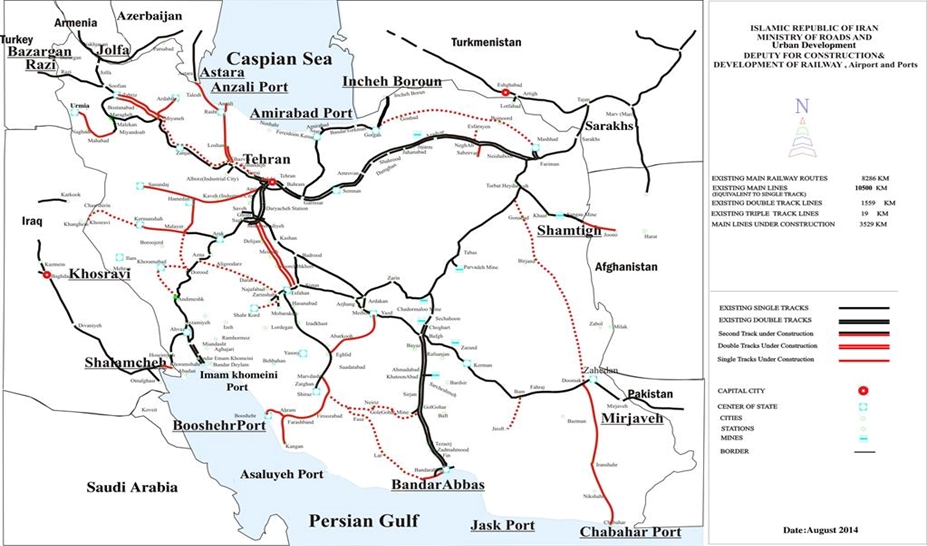Iran Economy
With a GDP of $ 412.2 b, Iran is the second largest economy in the region after Saudi Arabia in 2016. Although Iran is recognized as an oil-dependent economy, official data reveals that Services section with 48% (in 2016) has had the biggest share in GDP.
Graph 1 Share of economic sections in the generating value added 2016
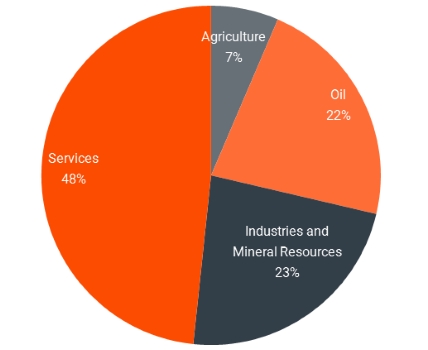
Source: CBI, IranPartner
Graph 2 Non-Oil GDP Growth trend 2016 (%)
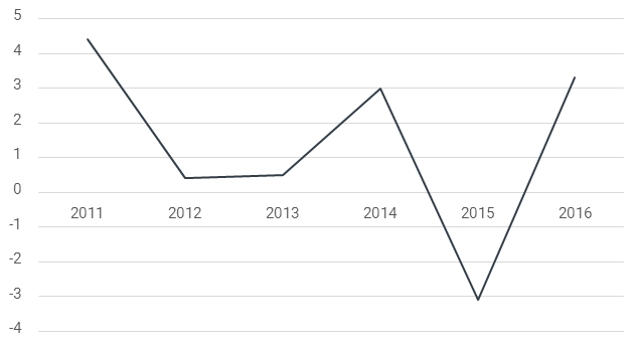
Source: CBI, IranPartner
Despite some reports about depression in the economy in 2016, the country has achieved a positive growth in three of its main sections in this year.
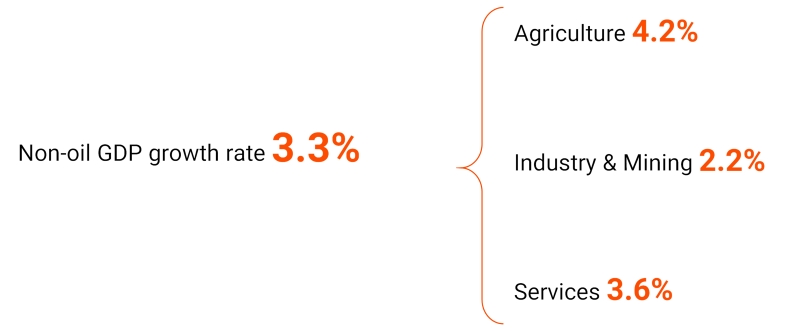
The only section which had a negative growth was the construction section (-13%). With the structural and planned changes in the economy, there is a hope for more rapid growth rates in the Iran Population distribution following years.
Foreign Trade
After many years with a negative trade balance, Iran had a positive trade balance in 2016. So that exports with a value of $ 43.8 b exceeded imports with a worth around $ 42.7 b. From the exported items, the main ones were from Oil group: Gas condensate, Light oils and products thereof except for gasoline, Liquide natural gas, liquefied propane, Petroleum gases, Liquefied gaseous hydrocarbons. And the main import items by value were Corn Feed, Soybean, Cars, Vehicle Parts, Rice.
Although the main exported items show that Iran still depends on oil & gas revenues, comparing imported items in recent decade reveals a slow shift from importing consuming goods toward capital ones. Another important matter in this regard is the Iran’s trade partners that will be more expanded significantly after Iran and P5+1 came to an agreement about nuclear sanctions’ removal on July 14, 2015.
Graph 3 Top 10 Import Origins 2016

Source: TCCIMA, IranPartner
Graph 4 Top 10 Export Destinations 2016
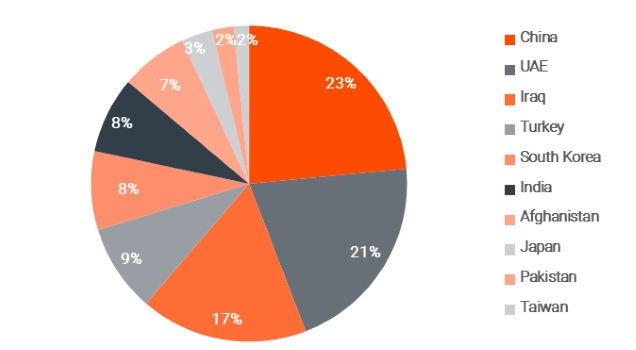
Source: TCCIMA, IranPartner
Agriculture
Nature has given the country the best opportunity for agricultural activities. In fact, Iran is very talented in producing the best of many agri products even though it has no industrialized agriculture section. That is inefficient traditional methods are the dominant farming method.
Graph 5 Iran’s global rank for various products
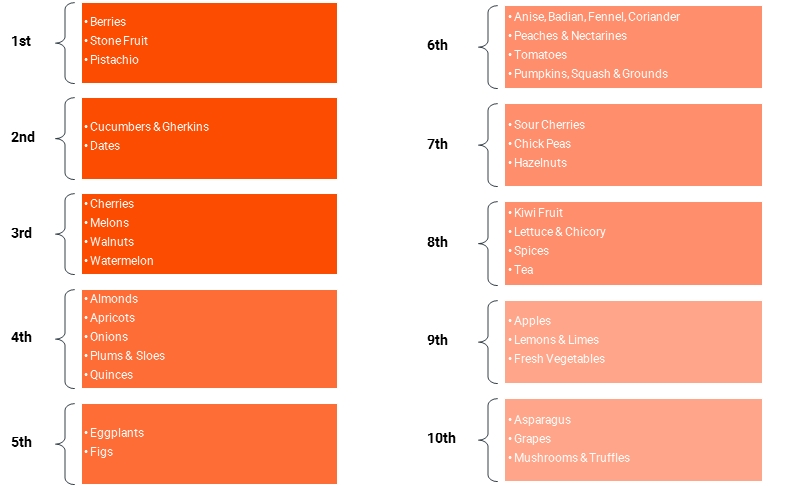
Source: FAO
Lack of modern irrigation systems in agriculture section when it is blamed for consuming the major part of water reserves while Iran is a dry country and deals with a water stress challenge is the most important challenge in this section.
Graph 6 Share of each section in producing value added
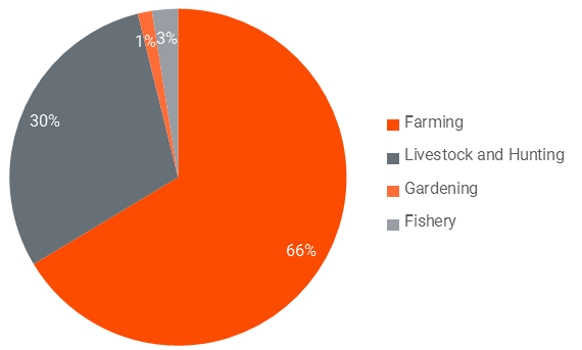
Source: CBI
Table 1 Selected agricultural products 2016
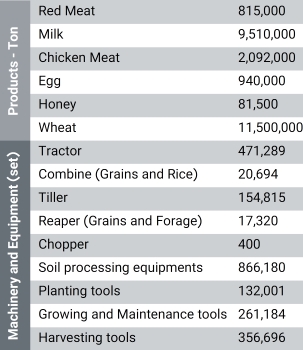
Source: MAJ
Main Industries
Although Iran is not an industrial country, some industries have been grown good enough to have a global rank. Like cement industry in which Iran is the forth in the world and Iron production that has brought about a global rank of ninth for the country.
Table 2- Value Added generated by middle sized and big industrial workshops – 2014
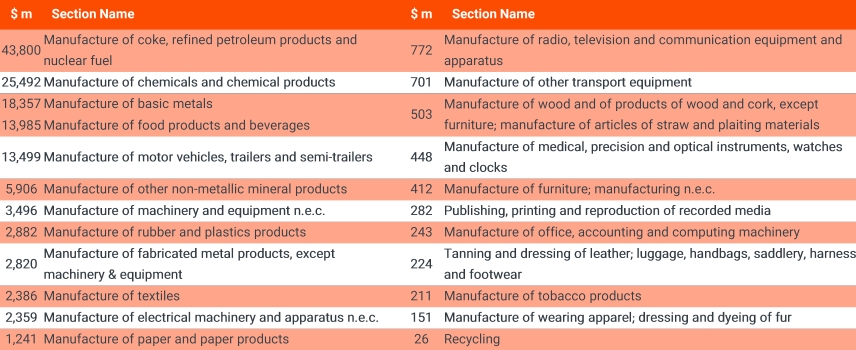
Source: SCI
Due to a depression in the economy in the recent years, Industry section should have shown a negative growth rate but instead, it has paved an unstable path. The reason probably is the fluctuations of oil price in the global market. When the oil price goes up, the oil export revenue helps the industry to show a positive growth rate and when it goes down, general depression in the economy will reveal itself in terms of a decreased growth rate.
Graph 7 Industry growth trend (%)
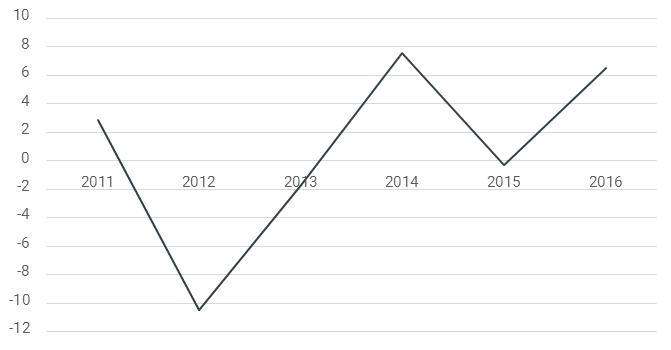
Source: SCI
In summary, Iran has a natural resource dependent economy which includes not only oil and gas reserves but mineral resources too.
Infrastructure
Infrastructures include all systems that are the basic and vital pillars of an economy in the way of development and prosperity. Here we map the network of sewage, water, electricity power, and gas coverage network throughout the country as well as seaports, airports, roads, and railroads’ network as the main infrastructures in an economy.
Map 1 Water Transmission Lines Network
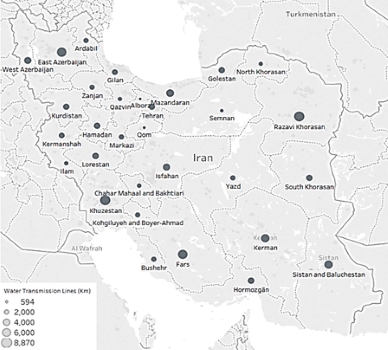
Source: Ministry of Energy (MOE), IranPartner
Map 2 Water Distribution Network
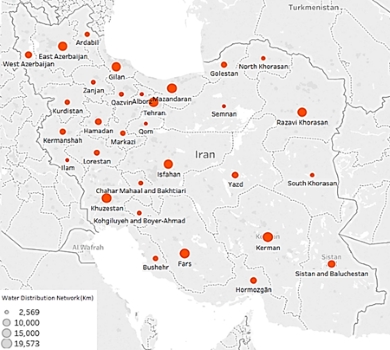
Source: Ministry of Energy (MOE), IranPartner
Map 3 Sewage Collection Network

Source: Ministry of Energy (MOE), IranPartner
Looking at the water transmission lines and distribution networks, reveals that this part of infrastructures has been developed unevenly throughout the country. In the sewage collection network the situation is worse. While Tehran and Isfahan are by far more developed sewage collection network than other provinces, for sewage transmission lines Isfahan, Kermanshah, and Khuzestan are more developed than other regions in the country.
Gas split network has no better condition than water and sewage system and only high populated states like Tehran, Isfahan, and Razavi Khorasan have been developed. Power distribution lines in Iran have been distributed through the country far better than water, sewage, and gas. But this section also need to be developed in the less developed regions like northeast and west. Iran has also 11 seaports, 32 airports, 7 freeways, 63 roads, and 12,998 km of railroads. Detailed information of these items are presented in the following tables and maps.
Map 4 Sewage Transmission Lines Network
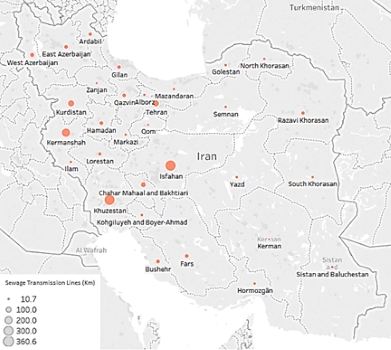
Source: Ministry of Energy (MOE), IranPartner
Map 5 Gas Splits Network
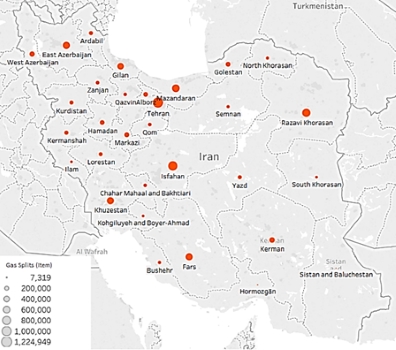
Source: Ministry of Energy (MOE), IranPartner
Map 6 Power Distribution Lines
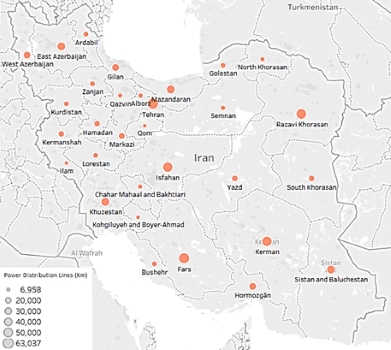
Source: Ministry of Energy (MOE), IranPartner
Table 3 List of Iran’s Sea Ports by location and general specifications
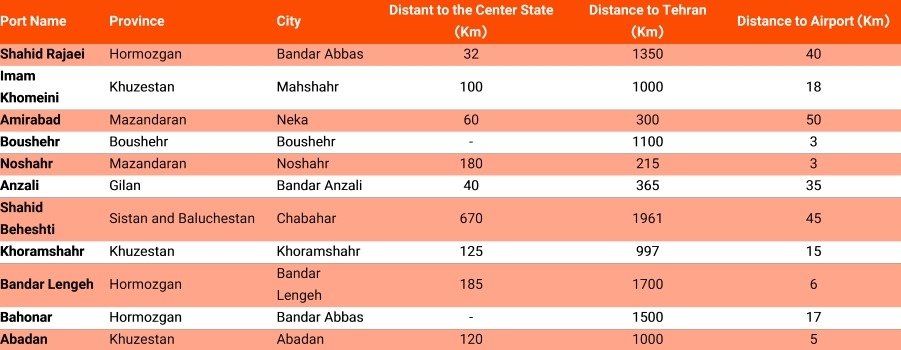
Source: Iran Ports and Maritime Organization
Table 4 Road’s network summarized data – 2016
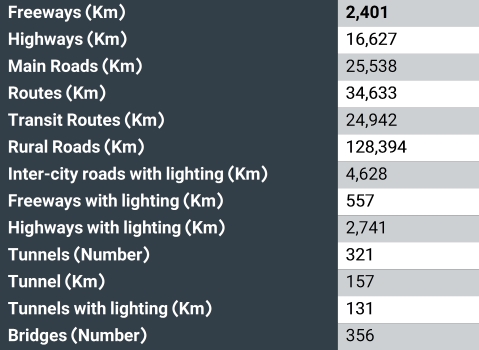
Source: Road Maintenance and Transportation Organization
Table 5 List of Iran’s International Airports by City

Source: Iranian Aviation News Agency
Map 7 Iran’s Railroad Map – 2016
